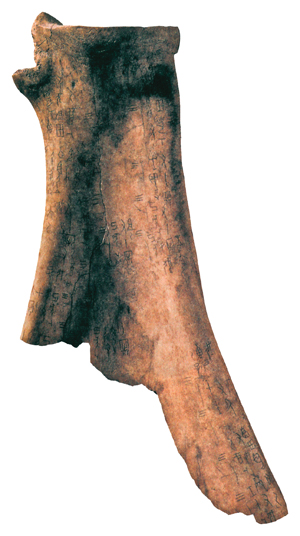Origin and Development of Categories of Calligraphy and Appreciation and Analysis of Calligraphy
Chinese calligraphy consists of five categories of seal script,、clerical script,、cursive script,、
running script and regular script.
Pre-Qin Dynasty Calligraphy
Oracle Bone Inscriptions
Bronze Inscription
In the eight hundred years between the end of Shang dynasty and the period of Spring and Autumn and the Warring States, there appeared words carved or inscribed on bronze wares of bells and dings, known as bronze inscriptions, bell and ding inscriptions or ji bronze inscriptions. Bronze Inscription of the late Shang dynasty is characterized by the pointy head and tail of a stroke which sandwich the portly centre and variation in size among the characters of the whole piece of text. Beginning from the middle and late era of the Western Zhou dynasty, the structure of bronze inscription turned harmonious, with strokes appearing in balance and intentional regulation on the arrangement of space between lines and characters.
 |
| San Shi Pan (a pan vessel). Western Zhou dynasty |
The number of words for the inscription on the tray totals 357, recording the land deed of the late Western Zhou. During the days, “San” and “Shi” were two small neighboring states. As the state boundaries were not clearly delineated, wars were frequent between the two states. In view of the turbulence caused to their lives, people found a third party state to execute arbitration. They decided to use bronze to carve a plate on which the state boundaries were clearly delineated. Further dispute over the boundary would call for the plate as proof.
Lines of the characters on San Shi tray are lean and strong, carrying liveliness and mobility. The Structure of characters shows a horizontal inclination. The Arrangement of the characters’ alignment appears in fair order, and at the same time, delivers a sense of freedom and animation. Masculinity, power and ruggedness are features of this style.




